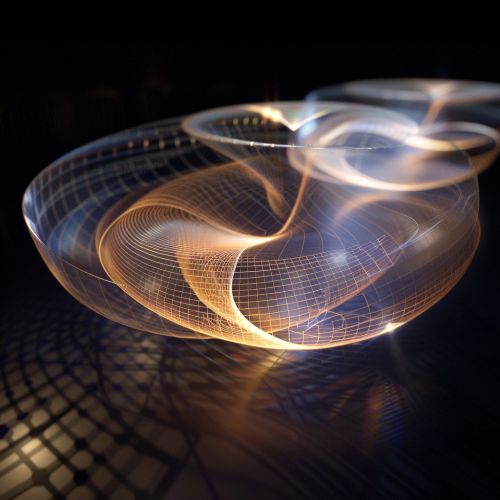Ricci curvature
Introduction
Ricci curvature is a mathematical concept that originates from the field of differential geometry. It is a scalar quantity that measures the amount by which the volume of a small geodesic ball in a Riemannian manifold deviates from that of the standard ball in Euclidean space. The Ricci curvature is named after Italian mathematician Gregorio Ricci-Curbastro, who is considered the father of tensor calculus.


Definition
In the context of Riemannian geometry, the Ricci curvature is defined as the trace of the Riemann curvature tensor. In more concrete terms, it can be thought of as a measure of the extent to which the geometry of a given space deviates from that of flat, Euclidean space. The Ricci curvature is a scalar quantity, meaning it assigns a single numerical value to each point in the space.
Mathematical Formulation
The Ricci curvature is defined in terms of the Levi-Civita connection of the Riemannian manifold. Given a tangent vector X at a point p in the manifold, the Ricci curvature at p in the direction of X is given by the formula:
Ric(p)(X, X) = Rm(X, Y, Y, X)
where Rm is the Riemann curvature tensor and Y is any unit vector orthogonal to X. The Ricci curvature is then the trace of the endomorphism of the tangent space at p given by X ↦ Rm(X, ·, ·, X).
Properties and Applications
The Ricci curvature has many important properties and applications in differential geometry and general relativity. For instance, it plays a crucial role in the formulation of Einstein's field equations, which describe the fundamental interaction of gravitation as a result of spacetime being curved by matter and energy.
In the context of Riemannian geometry, the Ricci curvature is related to the volume of small geodesic balls in the manifold. If the Ricci curvature is positive at a point, then small geodesic balls around that point have smaller volume than corresponding balls in Euclidean space. Conversely, if the Ricci curvature is negative, then small geodesic balls have larger volume.
The Ricci curvature also has important implications for the topology of the manifold. For instance, the Bonnet-Myers theorem states that a complete Riemannian manifold with positive Ricci curvature is compact and has finite fundamental group.
Ricci Flow
The Ricci flow is a process that deforms the metric of a Riemannian manifold in a way that is analogous to the diffusion of heat. It was introduced by Richard S. Hamilton in 1982 and has been widely used as a tool in geometry and topology. The Ricci flow is the central tool in Grigori Perelman's proof of the Poincaré conjecture.
